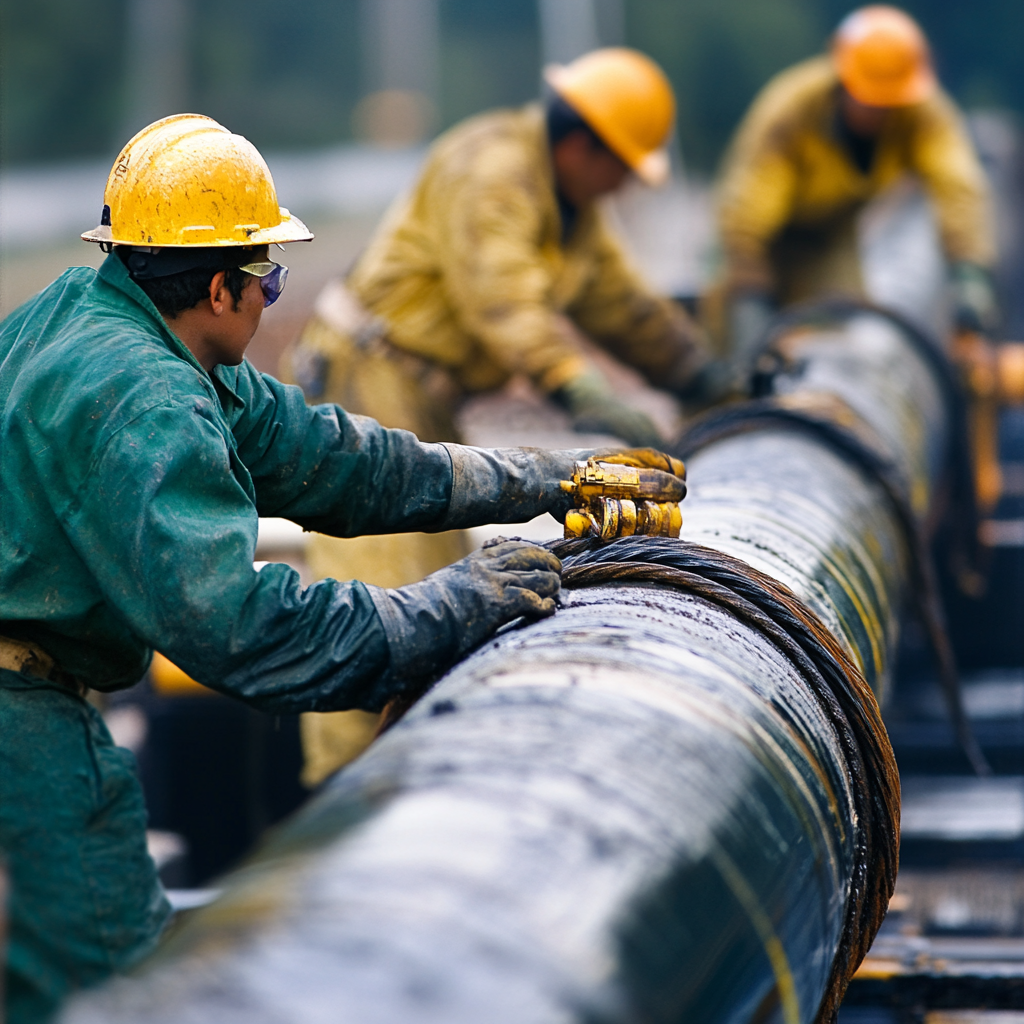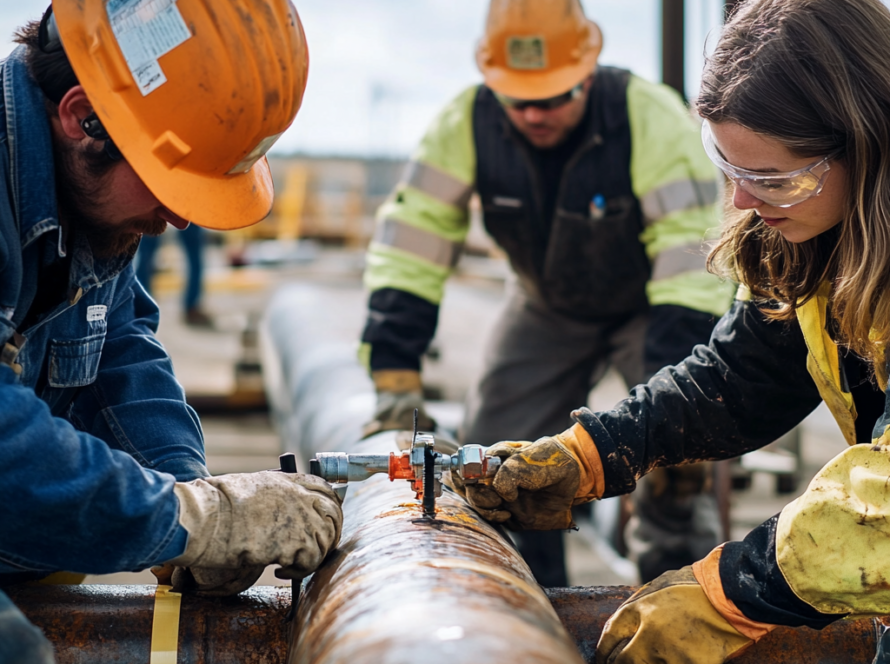Corrosion is an inevitable challenge faced by industries worldwide. From oil pipelines and storage tanks to infrastructure and marine vessels, corrosion affects every industry where metal assets are exposed to environmental elements. The stakes are high: undetected or untreated corrosion can lead to costly repairs, operational downtime, safety risks, and even catastrophic failure of critical equipment. To combat this, corrosion monitoring is essential. But with a variety of technologies available, how do you choose the right one for your needs?
Why Corrosion Monitoring Matters
Corrosion is a natural process that occurs when metals are exposed to corrosive environments such as moisture, chemicals, or saltwater. The damage it causes can be gradual, making it difficult to detect until significant degradation occurs. Regular monitoring helps identify corrosion early, allowing for preventative maintenance and reducing the risk of asset failure. This saves money, extends asset life, and ensures operational efficiency.
Effective corrosion monitoring is critical for industries like oil & gas, chemical processing, water treatment, power generation, and transportation. With advancements in technology, industries now have access to sophisticated corrosion monitoring tools that provide real-time data and actionable insights.
Key Considerations When Choosing a Corrosion Monitoring Technology
Selecting the right corrosion monitoring technology depends on several factors:
- Type of Asset: What kind of metal asset are you monitoring? Pipelines, tanks, and structural components may require different monitoring approaches.
- Operating Environment: Is the asset exposed to harsh environments such as offshore locations, high temperatures, or acidic chemicals? Environmental conditions influence the type of technology needed.
- Corrosion Risk: The severity of the corrosion risk will determine the level of monitoring required. High-risk environments may demand continuous, real-time monitoring, while low-risk areas may only need periodic checks.
- Budget and Resources: Monitoring technology costs can vary widely, and some methods require more expertise and maintenance than others. Your available resources will influence the decision.
- Regulatory Requirements: Depending on the industry, there may be legal or safety regulations that mandate specific types of corrosion monitoring.
Types of Corrosion Monitoring Technologies
1. Electrochemical Techniques
Electrochemical methods are among the most widely used corrosion monitoring techniques because they provide real-time data on corrosion rates and metal loss. These techniques involve measuring the electrical properties of a metal as it corrodes, which offers insight into the rate and severity of the corrosion.
Key Techniques:
- Linear Polarization Resistance (LPR): This method measures the corrosion rate by applying a small voltage to the metal and recording the resulting current. It’s fast and provides immediate feedback, making it ideal for real-time monitoring. LPR is commonly used in pipelines, storage tanks, and chemical processing plants where rapid data collection is critical.
- Electrochemical Impedance Spectroscopy (EIS): EIS measures the impedance (resistance) of a metal surface when subjected to alternating currents. It’s especially useful for evaluating protective coatings and detecting early corrosion before it becomes visible. This technique is often applied in industries like marine and automotive where coatings are crucial for corrosion resistance.
Best For: Real-time monitoring in pipelines, chemical processing, and environments where coatings are critical.
2. Ultrasonic Testing (UT)
Ultrasonic Testing is a non-destructive testing method that uses high-frequency sound waves to detect thinning of metal walls caused by corrosion. The sound waves travel through the metal, and any reduction in wall thickness due to corrosion is detected by the time it takes for the waves to reflect back.
Key Advantages:
- UT is highly accurate and can detect corrosion before it’s visible to the naked eye.
- It can be used on a wide range of materials and structures, including pipelines, storage tanks, pressure vessels, and structural beams.
- UT is non-invasive and does not require asset shutdown, making it ideal for continuous operations.
However, UT typically requires specialized equipment and trained personnel to interpret the data correctly.
Best For: Large structures and systems where non-destructive, high-accuracy measurements are required, such as in oil & gas pipelines, industrial tanks, and infrastructure.
3. Corrosion Coupons
Corrosion coupons are metal strips or disks that are placed within the environment being monitored. These coupons are made from the same material as the asset they are protecting, so they corrode at the same rate. After a set period, the coupon is removed, cleaned, and weighed to determine the amount of metal loss, which gives an estimate of the corrosion rate.
Key Advantages:
- Simple and cost-effective.
- No specialized equipment is required.
- Suitable for long-term monitoring and comparison of corrosion rates over time.
However, corrosion coupons only provide data after removal and analysis, so they are not suitable for real-time monitoring.
Best For: Low-cost, long-term monitoring in environments where real-time data is not necessary.
4. Corrosion Probes
Corrosion probes, such as electrical resistance probes, are inserted into pipelines, tanks, or other systems to monitor the rate of corrosion in real-time. These probes measure changes in electrical resistance as metal corrodes, providing continuous data on metal loss.
Key Advantages:
- Provides real-time corrosion rate data.
- Can be installed in inaccessible or hazardous locations.
- Highly accurate and sensitive to even small amounts of metal loss.
Corrosion probes are often used in industries where continuous monitoring is required, such as in the chemical processing, oil & gas, and power generation sectors.
Best For: Real-time, high-risk monitoring in challenging environments like offshore oil rigs, refineries, and chemical plants.
5. Remote Monitoring Systems
Remote monitoring systems use sensors placed on or near the asset to collect corrosion data continuously. This data is then transmitted wirelessly to a central system for analysis. Remote monitoring is ideal for locations where manual inspections are impractical, such as offshore platforms, remote pipelines, and hazardous environments.
Key Advantages:
- 24/7 real-time monitoring with minimal human intervention.
- Ideal for hard-to-reach or hazardous locations.
- Data can be accessed remotely, improving decision-making speed.
The downside is that remote monitoring systems often require higher upfront investment and ongoing maintenance, but the long-term benefits in terms of cost savings and asset protection are substantial.
Best For: Continuous, real-time monitoring of remote or dangerous locations such as offshore oil rigs, remote pipelines, and power generation facilities.
How to Choose the Right Technology
Choosing the right corrosion monitoring technology comes down to understanding your specific needs and balancing cost, accuracy, and practicality. Here’s a simplified approach to guide your decision-making:
- Assess Your Assets: Identify the types of assets you need to monitor and their susceptibility to corrosion. Are they exposed to moisture, chemicals, or extreme temperatures? This will help narrow down suitable technologies.
- Evaluate Corrosion Risk: Determine how quickly corrosion can occur in your environment. High-risk assets require real-time monitoring methods like LPR or ultrasonic testing, while low-risk assets may be adequately protected with corrosion coupons.
- Consider Budget and Expertise: Corrosion monitoring systems vary in cost and complexity. Some technologies, such as ultrasonic testing or remote monitoring, may require specialized equipment and expertise, while others like corrosion coupons are more affordable and straightforward.
- Think About Long-Term Benefits: While advanced systems like remote monitoring may have higher upfront costs, they can provide long-term savings by preventing costly failures, reducing maintenance costs, and extending asset life.
Conclusion
Corrosion is an inevitable but manageable challenge. The right corrosion monitoring technology can save your business from costly repairs, extend the life of critical assets, and ensure safety. Whether you need real-time data with electrochemical methods, the non-invasive precision of ultrasonic testing, or the simplicity of corrosion coupons, the key is to choose the technology that aligns with your industry, environment, and operational needs. By investing in the right corrosion monitoring system, you protect your assets, minimize downtime, and improve overall operational efficiency.med decisions that support long-term growth. In a world where asset integrity is critical to success, corrosion monitoring is a vital tool for protecting both financial investments and the environment.




